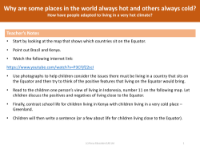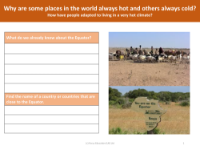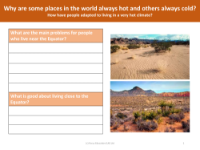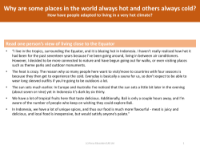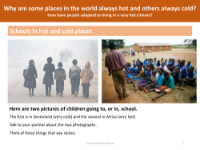Life on the equator - Writing task
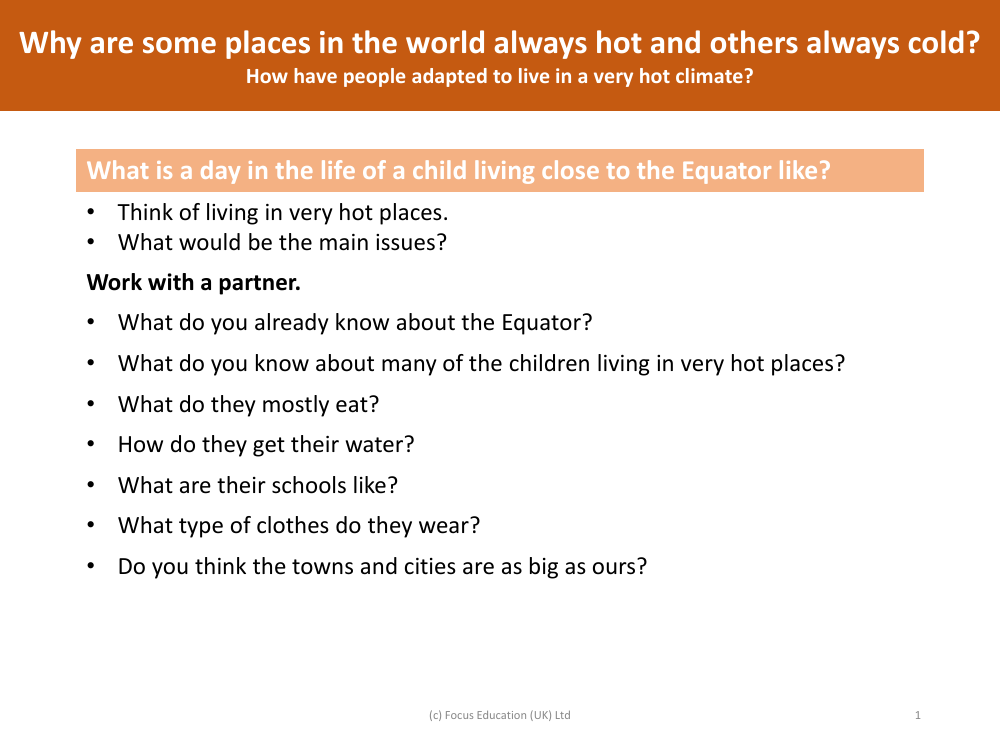
Geography Resource Description
A child living close to the Equator experiences a unique daily life, deeply influenced by the consistent hot climate that characterises equatorial regions. The heat can be intense and unrelenting, often dictating the rhythm of daily activities. Children in these areas may start their day very early to take advantage of the cooler morning hours for chores, school, or play. One of the main issues they face is staying hydrated and cool, as the midday sun can be punishing. Access to water is vital, and in some communities, children may have to help collect water for their families. The heat also affects their diet, with a reliance on locally grown, heat-tolerant crops and possibly limited food variety.
Equatorial schools might differ significantly from those in more temperate climates, with infrastructure designed to maximise ventilation and shade. The clothing worn by children is typically light and breathable, suitable for the heat, and often reflective of local customs and materials. While some equatorial cities are bustling metropolises, others might be smaller or more rural, with the size and infrastructure varying greatly. Understanding how people have adapted to such climates is key, from the architecture of their homes to the timing of their daily routines. This writing task invites students to explore these aspects, encouraging them to consider the diverse ways in which children around the world live and learn in different environmental conditions.



